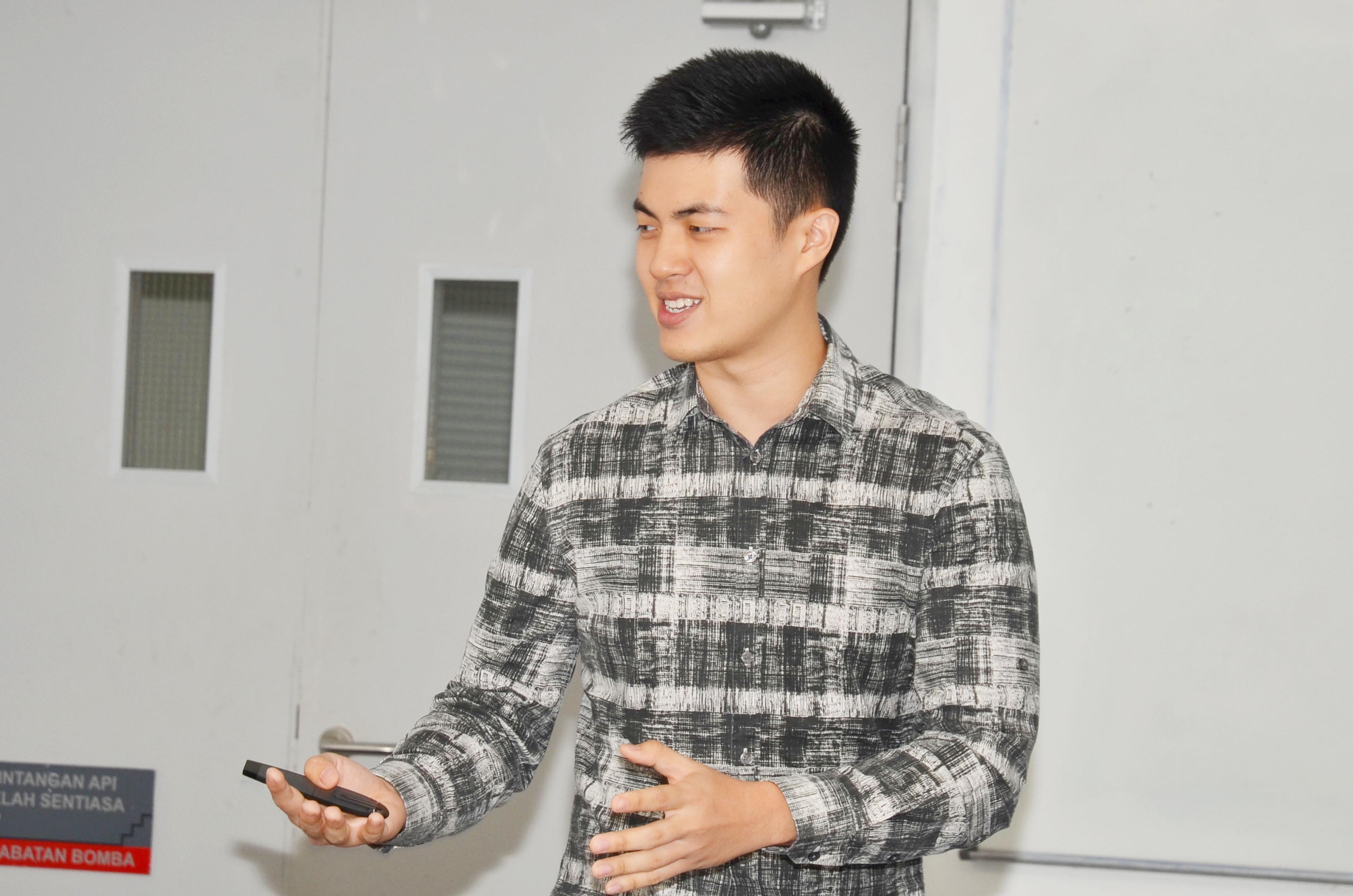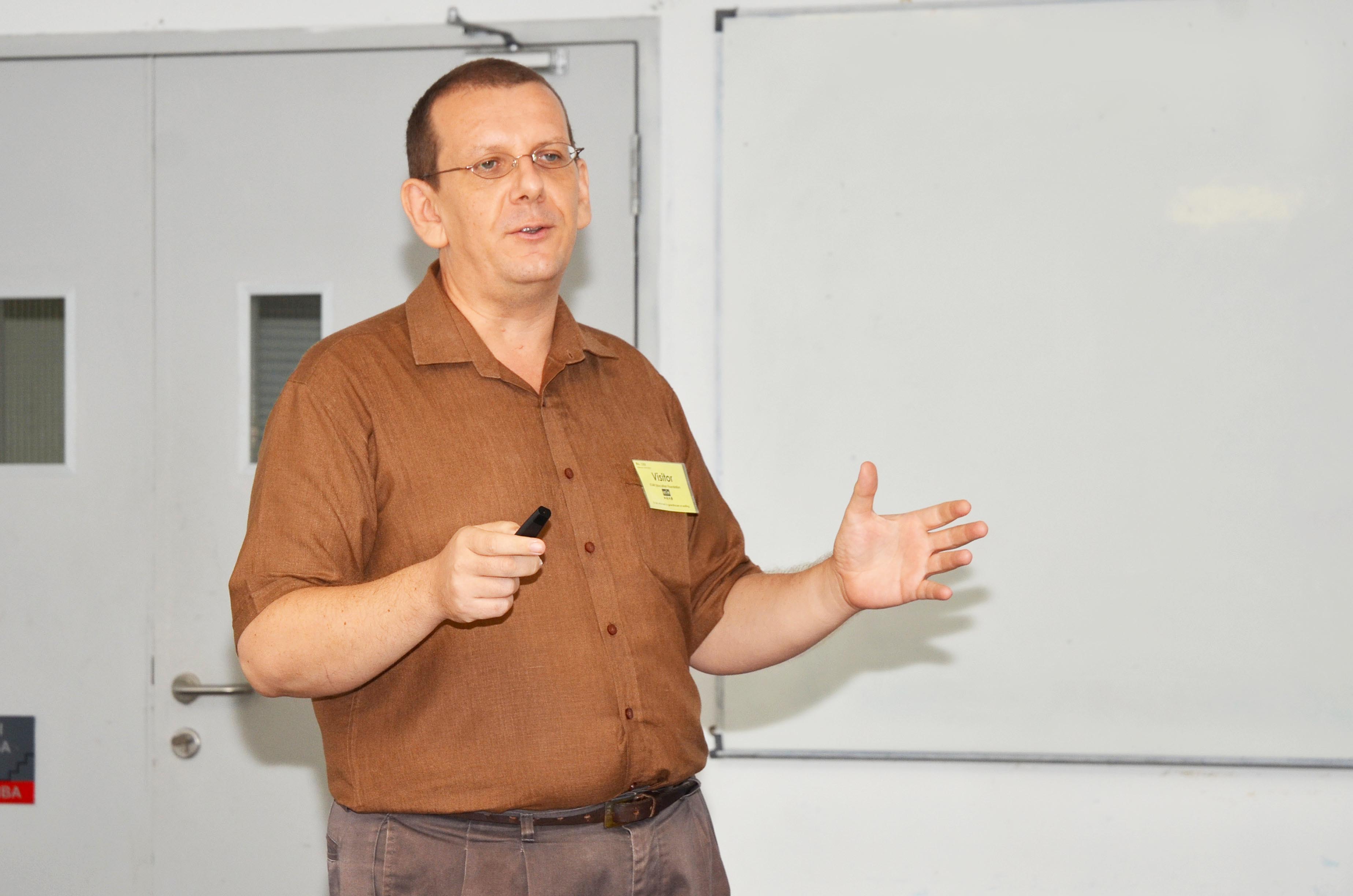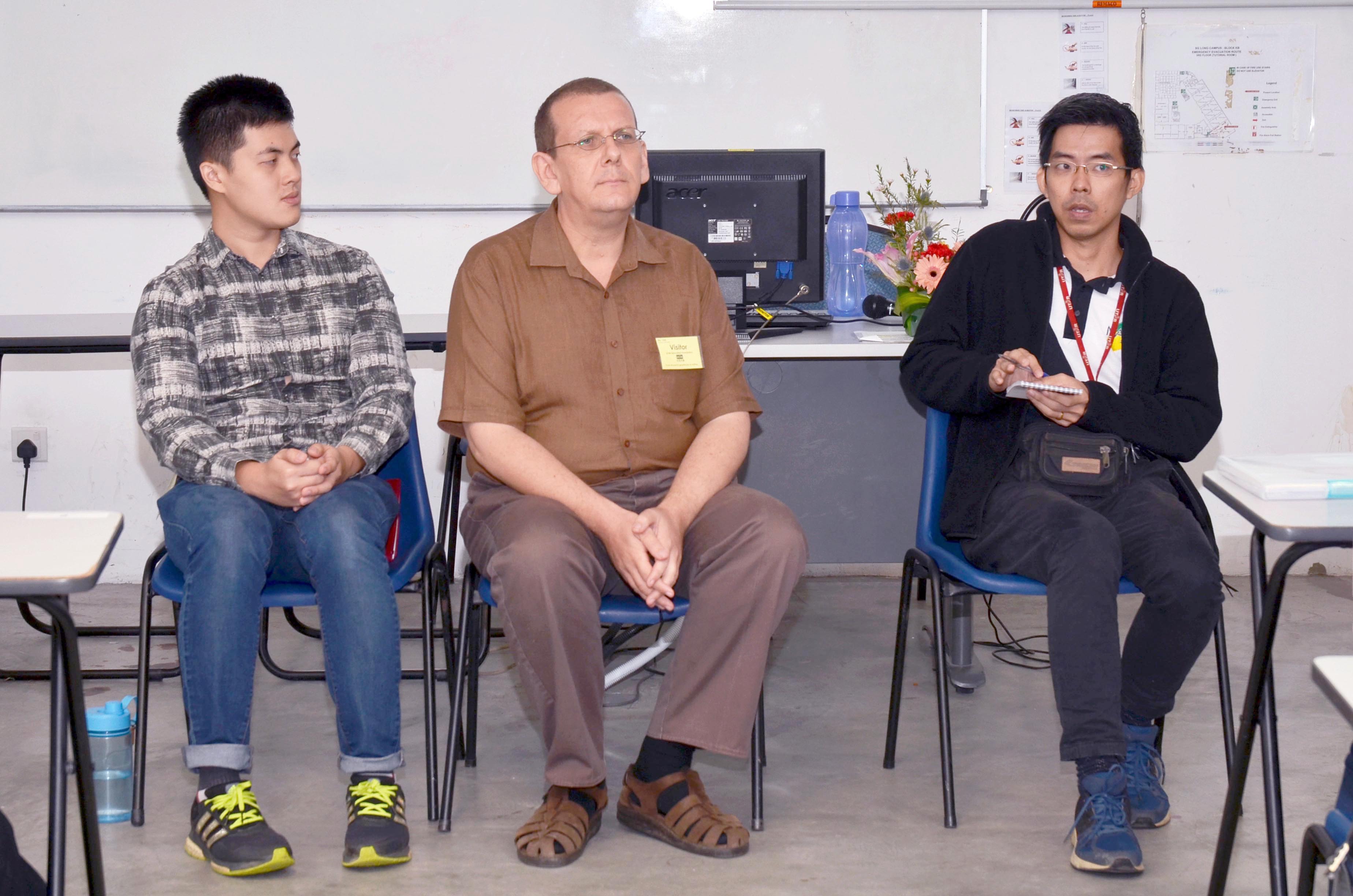


Seated from left: Tan, Chow and Dr Jean with the participants
A forum titled “Perception on Urban Wildlife and Common Species in City” was organised by the Department of Student Affairs (DSA) at UTAR Sungai Long Campus on 19 February 2019.
Present at the forum were panellists Malaysian Nature Society (MNS) Dr Jean Weber, The Rimba Project Manager Tan Kai Ren, DSA Officer Chow Keng Fatt and participants. The forum aimed to enlighten participants with discussions on the relation of urban biodiversity with humanity living in cities. The forum also highlighted the fundamental issue of how the society perceived urban wildlife and the surrounding, especially in open spaces, as well as the significance of integrated relationship between humans.

Chow delivering his opening remark
In his opening remark, Chow spoke, “Cities are fundamental ecological spaces that are packed with trees and vegetation. This is what is known to be an urban forest. It houses birds, insects and small mammals and it consists of diverse ecological habitats. The urban forest is also connected to sub-urban and rural areas along the ecological gradient. Human’s wellbeing, social justice and effective urban designs are intrinsically connected to the health of urban ecosystems. It is very interesting to note how these elements impact the life of city dwellers. Many city dwellers still perceive that the real biodiversity ecosystem only exists in rural or areas outside the cities.” He then played a video showcasing the wildlife living in the city.

Tan explaining about the urban biodiversity
Tan also added to Chow’s note that if real biodiversity were to only exist outside the cities, then there will not be an urban forest. “This is because there are still many trees in the city and some local places are even named after the Malacca and Petaling trees. Trees in the city are important to support the dwellers, animals and plants. There are also some animals and plants which can survive in a low humidity environment and can tolerate human habitats. These species of animals include rats and squirrels.”
Tan also interacted with the participants and explained the common species of urban wildlife that can be found in urban areas and in the forest. He also encouraged the participants to participate in the “Klang Valley City Nature Challenge 2019”, which will be held in April this year.

Dr Jean
Dr Jean, on the other hand, introduced the Malaysia National Policy on Biological Diversity (NMP). He said that with that policy, Malaysia has set for the year 2020 to have more promotion and encouragement on the understanding and participation from the public and institutions for the effective conservation and protection of biological diversity. He also emphasised the importance of the conservation efforts taken and introduced the conservation of lowland tree species. He explained the importance of conserving the trees and the strategies that needed to be followed for effective conservation.
“Everyone should be aware of NMP and it is important that we understand the conservation strategies. Sustainable development and society in equilibrium with nature are the goals that we need to achieve. We also use the nature as our reference and guideline to see how our conservation efforts are taking effect, how it affects the society and what changes will occur,” said Dr Jean.

From left: Tan, Dr Jean and Chow giving their conservation ideas
The forum ended with an interactive Q&A session and a group photograph.

Participants listening attentively
![]()
© 2019 UNIVERSITI TUNKU ABDUL RAHMAN DU012(A).
Wholly owned by UTAR Education Foundation Co. No. 578227-M LEGAL STATEMENT TERM OF USAGE PRIVACY NOTICE